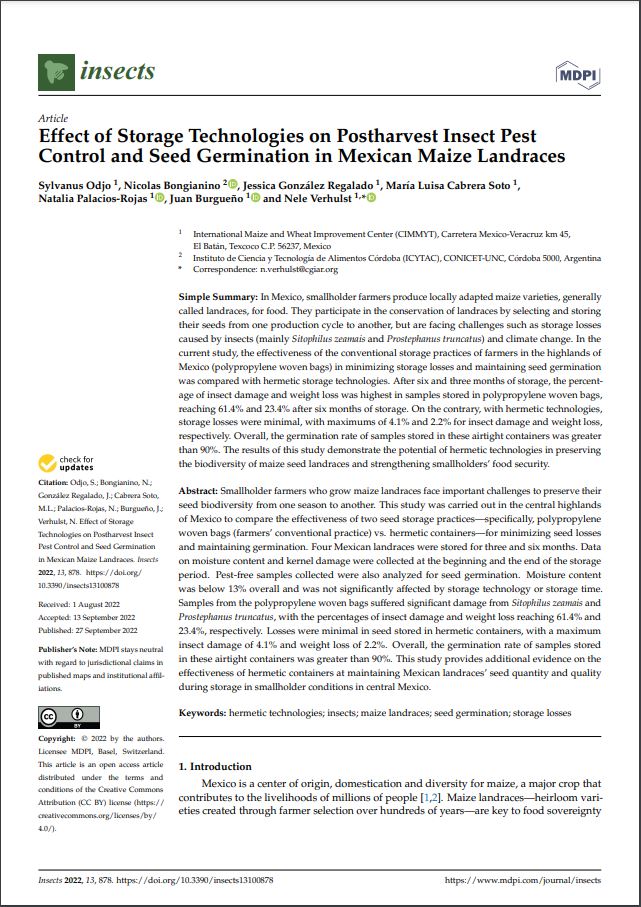Smallholder farmers who grow maize landraces face important challenges to preserve their seed biodiversity from one season to another. This study was carried out in the central highlands of Mexico to compare the effectiveness of two seed storage practices—specifically, polypropylene woven bags (farmers’ conventional practice) vs. hermetic containers—for minimizing seed losses and maintaining germination. Four Mexican landraces were stored for three and six months. Data on moisture content and kernel damage were collected at the beginning and the end of the storage period. Pest-free samples collected were also analyzed for seed germination. Moisture content was below 13% overall and was not significantly affected by storage technology or storage time. Samples from the polypropylene woven bags suffered significant damage from Sitophilus zeamais and Prostephanus truncatus, with the percentages of insect damage and weight loss reaching 61.4% and 23.4%, respectively. Losses were minimal in seed stored in hermetic containers, with a maximum insect damage of 4.1% and weight loss of 2.2%. Overall, the germination rate of samples stored in these airtight containers was greater than 90%. This study provides additional evidence on the effectiveness of hermetic containers at maintaining Mexican landraces’ seed quantity and quality during storage in smallholder conditions in central Mexico.

